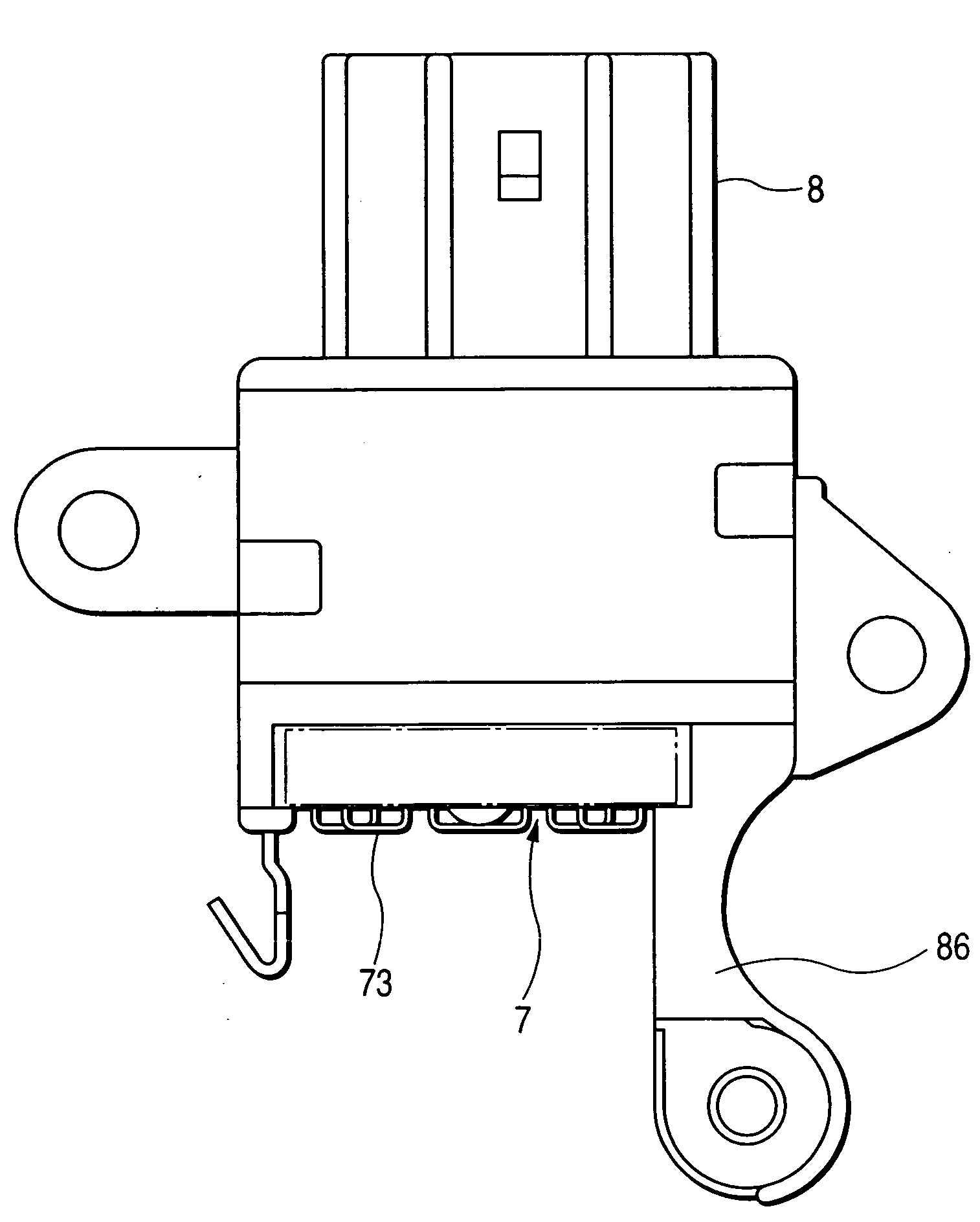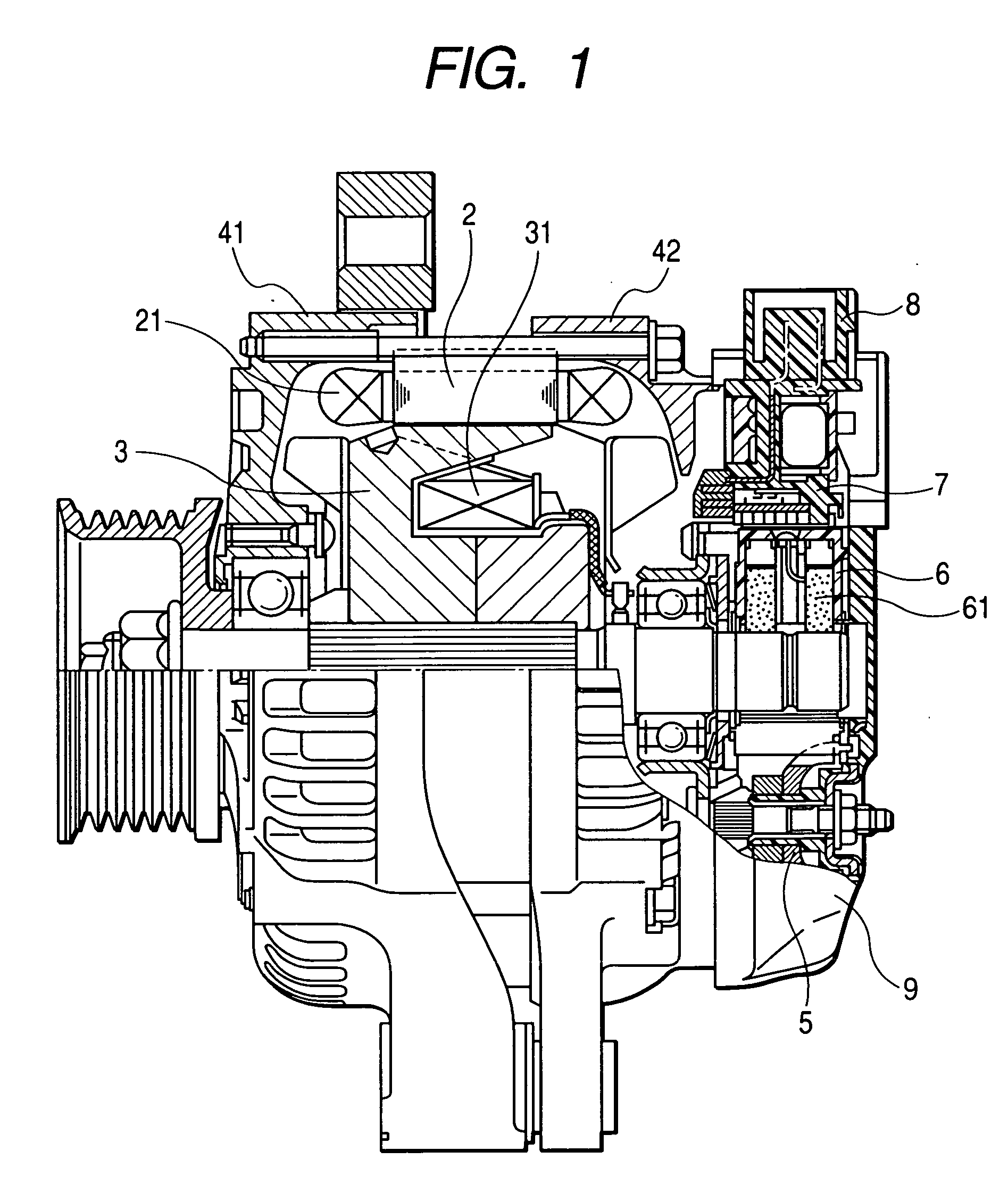Vehicle alternator
a technology of vehicle alternator and rotor, which is applied in the direction of magnetic circuit rotating parts, magnetic circuit shape/form/construction, windings, etc., can solve the problems of increasing the temperature of various components forming the vehicle alternator, increasing the thermal energy of the component, and increasing the size of the mounting space etc., to enhance the reliability of the vehicle alternator, good bonding state, and thermal stress applied to the bonding material
- Summary
- Abstract
- Description
- Claims
- Application Information
AI Technical Summary
Benefits of technology
Problems solved by technology
Method used
Image
Examples
embodiment
[0024] A description will be given of the vehicle alternator according to the embodiment of the present invention with reference to FIG. 1 to FIG. 7.
[0025] FIG.1 is a schematic view of an entire configuration of the vehicle alternator according to the embodiment of the present invention. FIG. 2 is a rear view of the vehicle alternator shown in FIG. 1.
[0026] As shown in FIG. 1 and FIG. 2, the vehicle alternator 1 has a stator 2, a rotor 3, a front housing 41, a rear housing 42, a rectifier device 5, a brush device 6, a regulator case 7, a connector case 8, and a rear cover 9.
[0027] The stator 3 acts as an armature having a stator winding 21. The rectifier device 7 rectifies the three-phase output current from the stator winding 21 and provides a rectified direct current. The rotor 3 acts as a field magnet, which is composed of two parts that are placed on opposite faces to each other. The front housing 41 and the rear housing 42 support the stator 2 and the rotor 3. The rectifier ...
PUM
 Login to View More
Login to View More Abstract
Description
Claims
Application Information
 Login to View More
Login to View More - R&D
- Intellectual Property
- Life Sciences
- Materials
- Tech Scout
- Unparalleled Data Quality
- Higher Quality Content
- 60% Fewer Hallucinations
Browse by: Latest US Patents, China's latest patents, Technical Efficacy Thesaurus, Application Domain, Technology Topic, Popular Technical Reports.
© 2025 PatSnap. All rights reserved.Legal|Privacy policy|Modern Slavery Act Transparency Statement|Sitemap|About US| Contact US: help@patsnap.com



